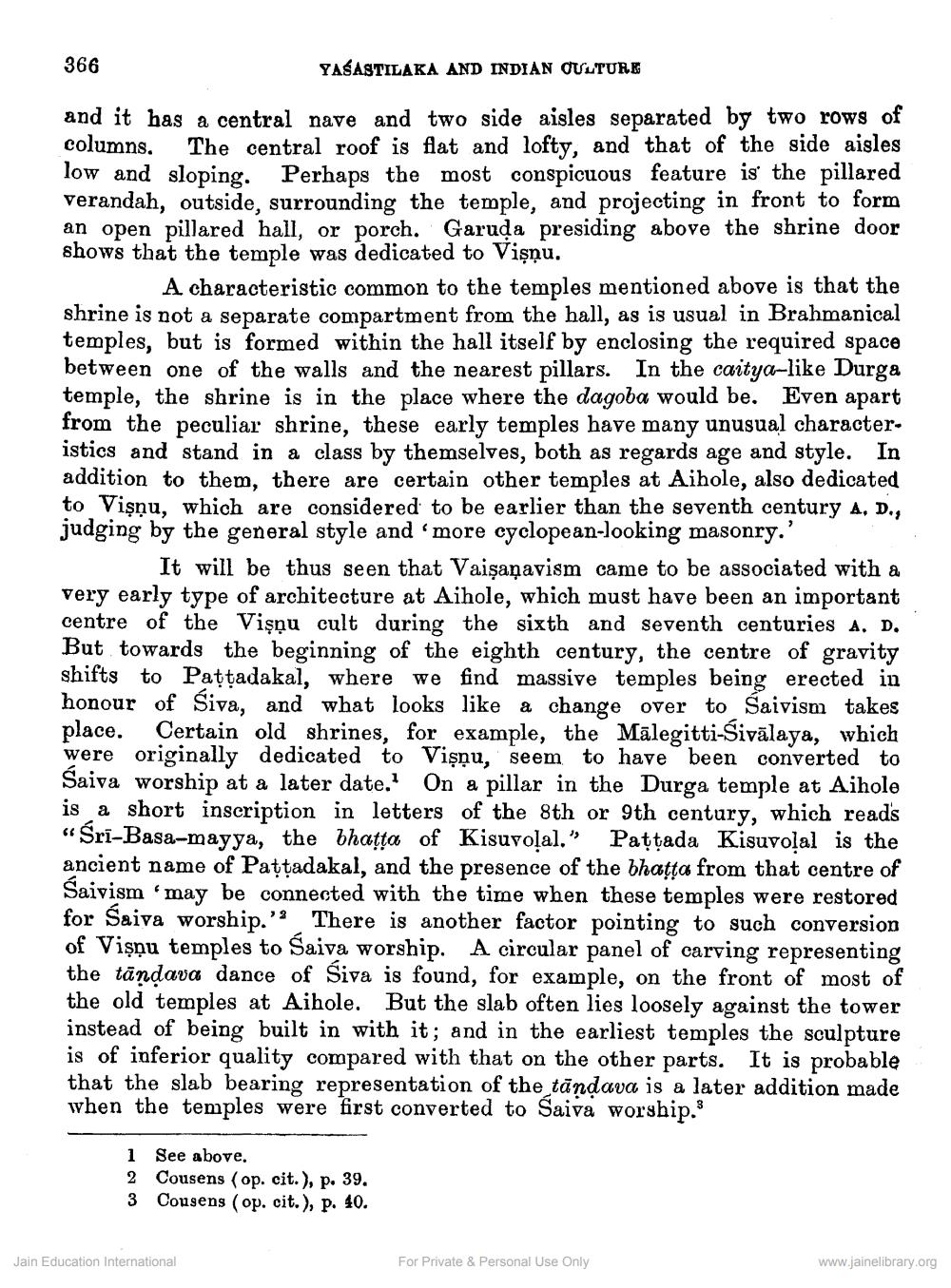________________
366
YASASTILAKA AND INDIAN CULTURE
and it has a central nave and two side aisles separated by two rows of columns. The central roof is flat and lofty, and that of the side aisles low and sloping. Perhaps the most conspicuous feature is the pillared verandah, outside, surrounding the temple, and projecting in front to form an open pillared hall, or porch. Garuda presiding above the shrine door shows that the temple was dedicated to Vişnu.
A characteristic common to the temples mentioned above is that the shrine is not a separate compartment from the hall, as is usual in Brahmanical temples, but is formed within the hall itself by enclosing the required space between one of the walls and the nearest pillars. In the caitya-like Durga temple, the shrine is in the place where the dagoba would be. Even apart from the peculiar shrine, these early temples have many unusual character. istics and stand in a class by themselves, both as regards age and style. In addition to them, there are certain other temples at Aihole, also dedicated to Vişnu, which are considered to be earlier than the seventh century A, D., judging by the general style and more cyclopean-looking masonry.'
It will be thus seen that Vaişaņavism came to be associated with a very early type of architecture at Aihole, which must have been an important centre of the Vişņu cult during the sixth and seventh centuries a. D. But towards the beginning of the eighth century, the centre of gravity shifts to Pattadakal, where we find massive temples being erected in honour of Siva, and what looks like a change over to Saivism takes place. Certain old shrines, for example, the Mālegitti-Sivālaya, which were originally dedicated to Vişnu, seem to have been converted to Saiva worship at a later date. On a pillar in the Durga temple at Aihole is a short inscription in letters of the 8th or 9th century, which reads “Srī-Basa-mayya, the bhatta of Kisuvolal." Pattada Kisuvolal is the ancient name of Pattadakal, and the presence of the bhatta from that centre of Saivism may be connected with the time when these temples were restored for Saiva worship.'? There is another factor pointing to such conversion of Visnu temples to Saiva worship. A circular panel of carving representing the tāndava dance of Siva is found, for example, on the front of most of the old temples at Aihole. But the slab often lies loosely against the tower instead of being built in with it; and in the earliest temples the sculpture is of inferior quality compared with that on the other parts. It is probable that the slab bearing representation of the tändava is a later addition made when the temples were first converted to Saiva worship.3
1 See above. 2 Cousens (op. cit.), p. 39. 3 Cousens (op. cit.), p. 40.
Jain Education International
For Private & Personal Use Only
www.jainelibrary.org




